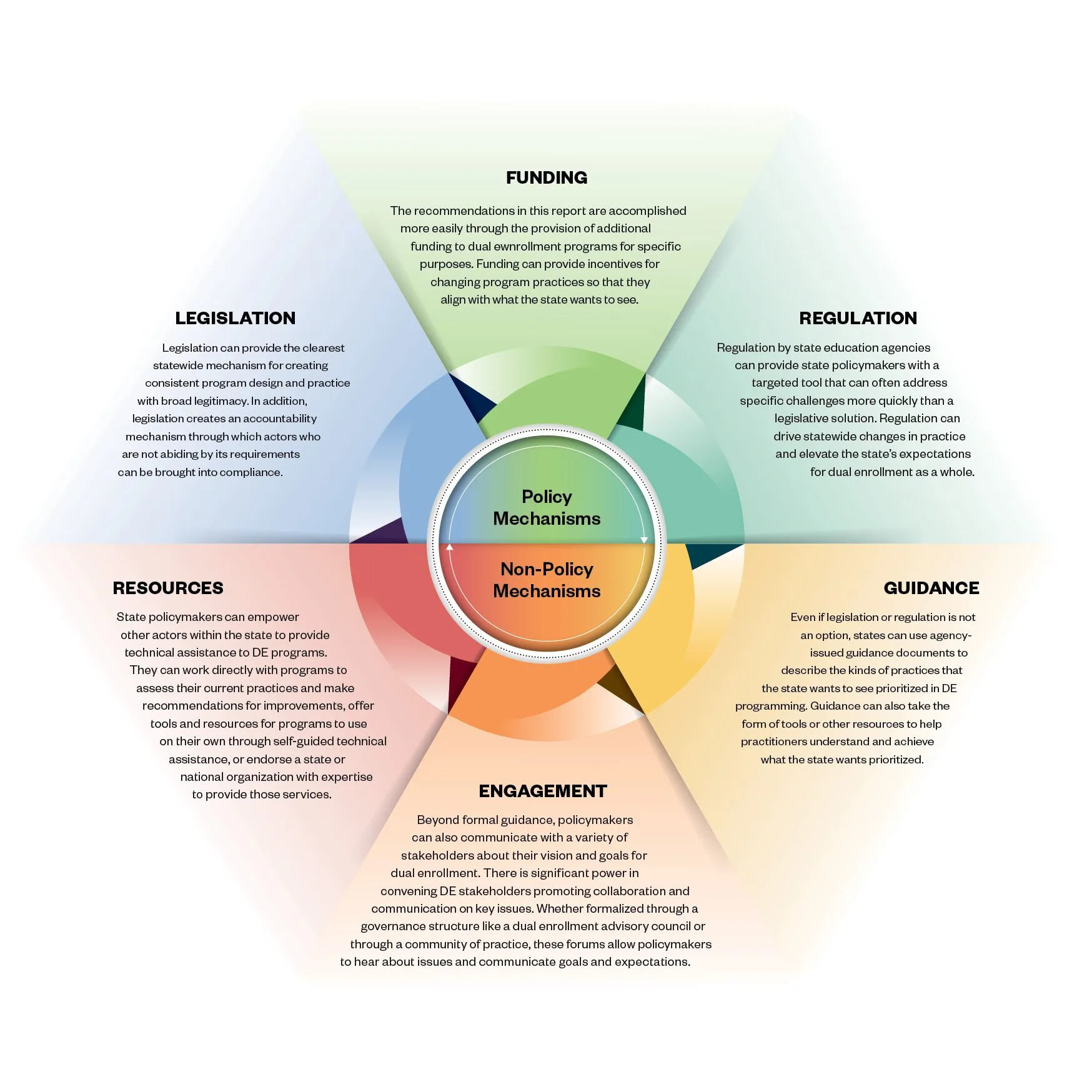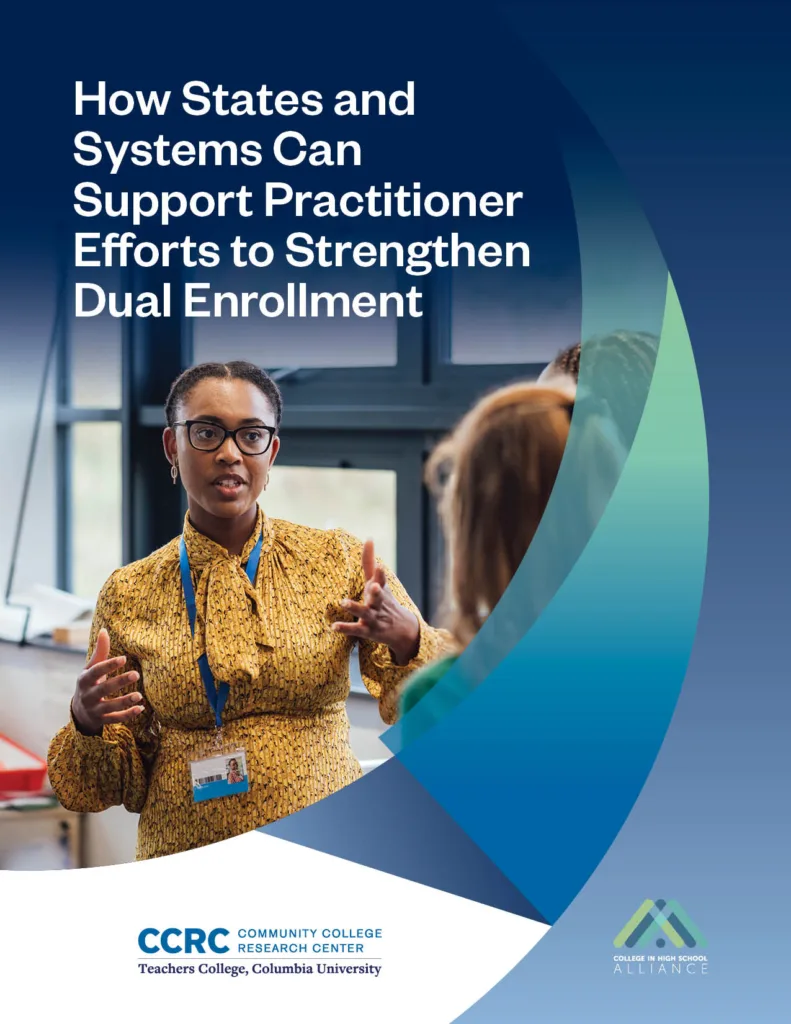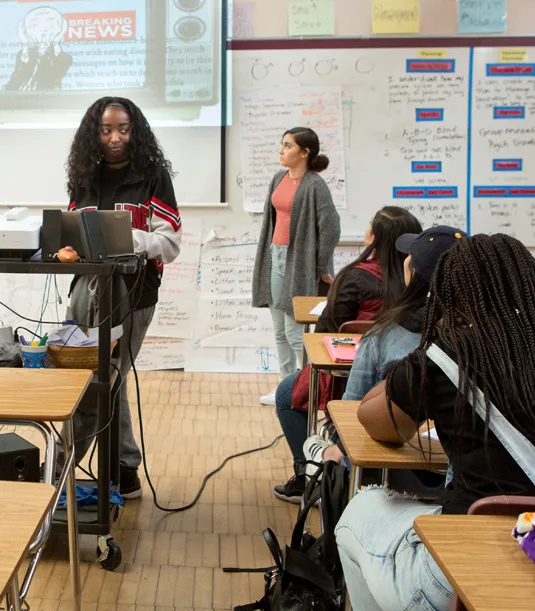How States and Systems Can Support Practitioner Efforts to Strengthen Dual Enrollment
A CHSA/CCRC Co-Publication
January 2024
The Community College Research Center (CCRC) and the College in High School Alliance (CHSA) have released a new report, How States and Systems Can Support Practitioner Efforts to Strengthen Dual Enrollment, with guidance for states and college systems on supporting colleges and high schools to strengthen dual enrollment. A guide that accompanies the report is designed to help state and system leaders evaluate their current policy and guidance around dual enrollment and plan improvements.
With more than a million high school students enrolling in college courses through dual enrollment annually, the benefits of these programs have been well documented. So, too, have the gaps in participation among Black and Hispanic students, English learners, students with disabilities, and other groups not well served in the high school-to-college-and-career transition.
Guidance for States and Systems
Drawing on findings from interviews with college and K-12 leaders and reformers described in The Aspen Institute and CCRC’s Dual Enrollment Playbook and in CCRC’s research on Dual Enrollment Equity Pathways (DEEP) practices, CCRC and CHSA provide state leaders with recommendations for improving dual enrollment programming in ways that support practitioners’ efforts. The recommendations are organized into three areas: expanding access, strengthening on-ramps to postsecondary pathways, and building and sustaining strong partnerships.
Across the three areas, the report highlights six potential mechanisms for states and systems to support improvements to dual enrollment, including policy (legislation, funding, and regulation) and nonpolicy (guidance, engagement, and resources) approaches. The report details examples from across the country describing how states and systems have used the mechanisms to support practitioner efforts to strengthen dual enrollment. By focusing both on policy and nonpolicy mechanisms, the report illustrates what is possible across a range of state governance structures and fiscal environments.

The report’s recommendations include examples of how states and systems are:
Access the paper
How States and Systems Can Support Practitioner Efforts to Strengthen Dual Enrollment
- Expanding access by setting statewide goals and measuring progress, rethinking eligibility requirements, and reducing tuition and non-tuition costs to students and families through state funding;
- Strengthening on-ramps to postsecondary pathways by aligning and promoting credit transfer, prioritizing advising and navigational supports, promoting FAFSA completion before graduation, and providing support to strengthen the quality of instruction;
- Building and sustaining strong partnerships by aligning college and K-12 incentives to promote dual enrollment access and success, diversifying, expanding, and supporting further credentialing of the instructor pool, maximizing college/K-12 partnership potential through relationships and communities of practice, and encouraging a culture of equity in dual enrollment programming.
To ground these recommendations, the report showcases the various policy and nonpolicy mechanisms states used to support dual enrollment. State and local contexts vary substantially, but state leaders can be very influential in setting a statewide vision and goals for dual enrollment and in pushing progress toward those goals. Even if creating a new policy or adding funding is not realistic in the near term, this report details other mechanisms states can use to support the essential work of college and K-12 practitioners to broaden the benefits of dual enrollment coursework.
State Policymaker Strategy Development Guide
CCRC and CHSA also developed a strategy guide for state policymakers to help them reflect on and advance these recommendations given their state and local contexts. The guide, which accompanies the report, helps state and system leaders develop action steps for supporting practitioners in strengthening dual enrollment programs and track their progress.


